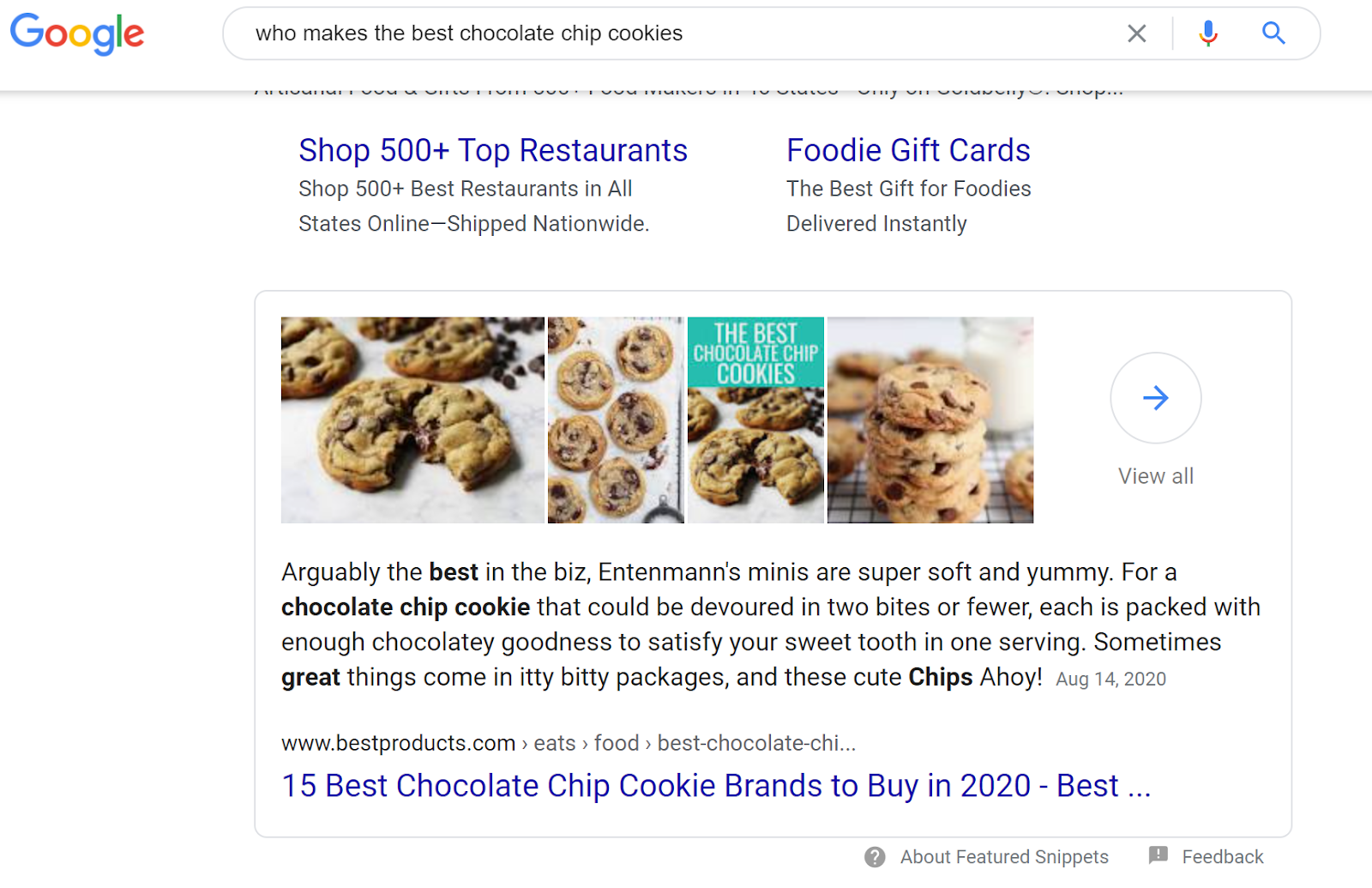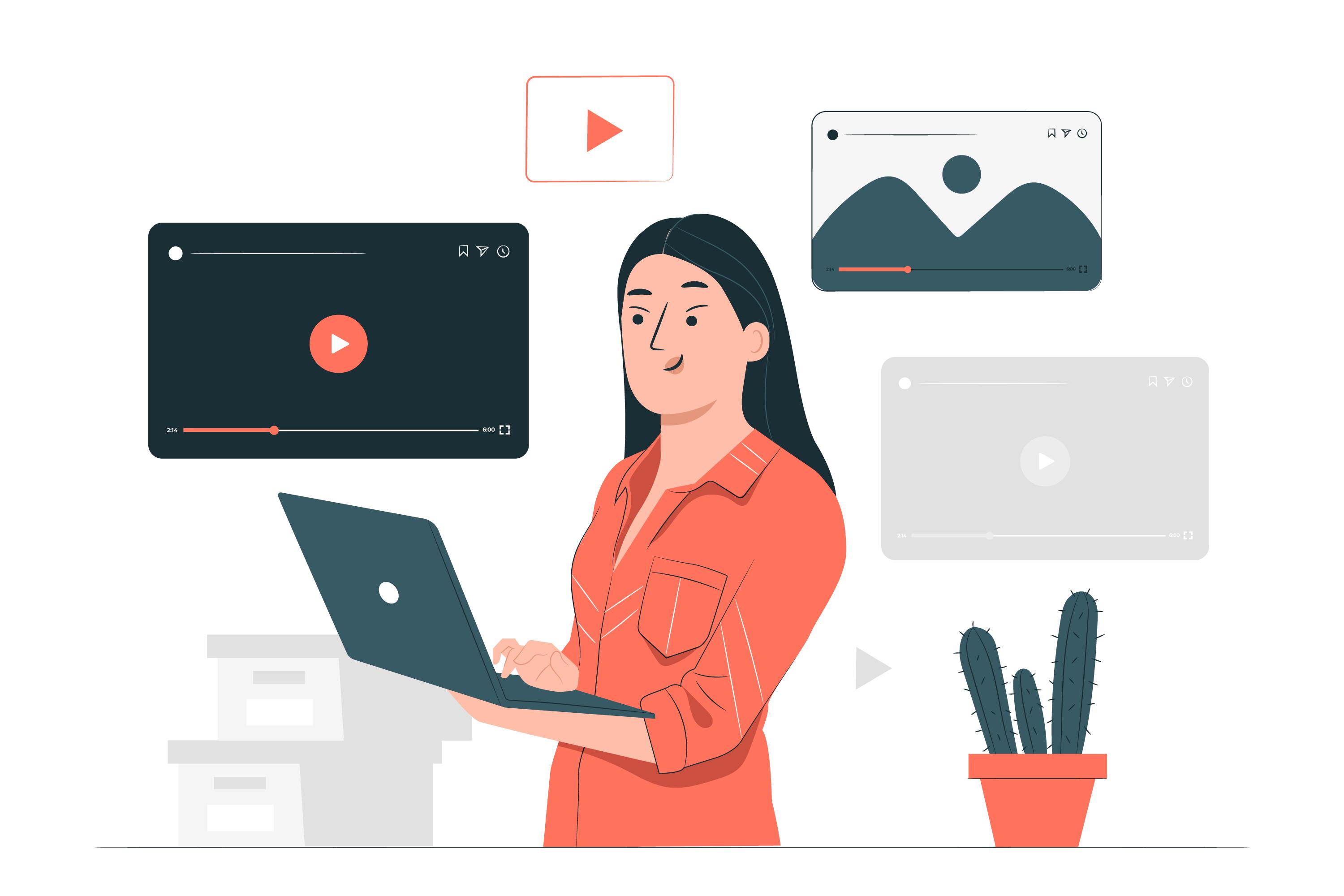
8 Reasons Why Webinars are More Effective than In-Person Meetings
November 18, 2020
How to Increase E-commerce Sales During COVID-19 with 5 Key Points
December 2, 2020The SEO landscape is always changing and we have to keep a lookout for new updates that are occurring. By keeping abreast of the latest SEO updates, you can continue to maintain top-ranking SEO performances.
Here are 12 SEO trends as reported by SEMrush to anticipate in 2021 in order to prepare you for your SEO strategy.
1. Artificial Intelligence Will Play a Larger Role in SEO
Artificial intelligence (AI) is changing how people interact with online content. Google’s AI algorithm called RankBrain plays an important role in Google’s ranking factors for search engine results pages (SERPs) results.

So, the main question is, how do you optimize your SEO for RankBrain? While we won’t know for sure since Google didn’t share details, experts believe that user experience signals are the primary determinant. These could include factors from click-through rate to time spent on page. You need to captivate and engage readers with useful, well-organized content. An on-page SEO checker can help you assess page strength based on points like readability, backlinks, and more.
2. Voice Search Will Impact Search Queries
Voice searches are becoming more popular and more people are using devices like Google Assistant or Apple’s Siri to search for things.
To optimize for voice search, consider your keywords. Identify longer phrases that people use in everyday conversation. Voice searches tend to do better with longer, more natural-sounding phrasing. When people type, they tend to abbreviate. For example, a person might voice search, “What are the new SEO trends for 2021?” but type the words, “new SEO trends 2021.”
3. Mobile-Friendliness Will Impact Search Rankings

To make sure your page is user-friendly, you have to ensure that Google can crawl your URLs, so make sure you don’t have a “disallow directive” in place. Also, beware that Googlebot won’t load content requiring user interactions, like clicking or swiping. You have to make sure Google can see this so-called lazy-loaded content. Finally, ensure you use the same meta robots tags on the desktop and mobile sites.
4. Content That Fulfils the Google EAT Principle Will Rank Higher
Google has reiterated that content quality is critical for ranking success. But just what does “quality” mean to Google? Refer to the EAT principle: expertise, authoritativeness, and trustworthiness. These factors help determine if a webpage has useful quality content.
Keep EAT in mind as you craft your content. Back up claims with statistics and facts. Link to reputable sites, such as “.edu” and “.gov” URLs. Having authoritative sites link back to you is another way to prove that you fulfil the EAT criteria.
5. Long-Form Content Will Help Improve SERPs
According to SEMrush’s State of Content Marketing Report, long reads of 3,000-plus words get three times more traffic and four times more shares. They also achieve 3.5 times more backlinks than articles of the average length of 901 to 1,200 words.
Start focusing on long-form content to achieve higher search rankings. That said, your content must maintain quality. The aim is to provide users with shareable information that keeps them engaged.
6. Featured Snippets Will Become More Prominent
Featured snippets, which were rolled out in 2017, are a sort of shortcut to gaining prominence in Google — and they’re very brief. Sometimes, when you type something into Google, you may notice a box at the top of the SERPs, above the actual results. That’s a snippet.

Getting a featured snippet is a great way to get on that coveted first page of results. What’s more, snippets steal significant traffic from competitors. To create snippets, focus on question-based queries and relevant keywords to help you score.
7. Predictive Search Is Set to Improve
Google Discover was launched in 2017, unleashing a new kind of search — one that doesn’t even require a user query. Discover is another one of Google’s AI-driven tools. The content recommendation tool identifies user behavioural patterns over time and gradually learns these habits.
To appear, you don’t have to do anything special. If Google indexes your page, it will be included. Content is ranked based on algorithms inspecting content quality, and user interest. Although Google has communicated no precise factors, it seems that location history, browsing history, app usage, calendars, search history, and home and work locations are all relevant.
8. An Effective SEO Strategy Will Need to Include Video

Videos are the new form of content to go-to. How can you optimize that video content, though? Make sure to optimize your video channel name and description. The description shouldn’t just be crammed with keywords but provide a user-friendly overview of what your channel is about.
Beyond this, keywords are crucial. For example, if you’re optimising for YouTube, you can get inspired by the platform’s auto-complete feature. Start typing in your video’s topic and see what pops up in the search field, which is essentially a list of suggested keywords, telling you precisely what people on YouTube are searching for.
9. Image Optimization Will Play a Larger Role in Search
Visual image search has evolved drastically. It used to be that people could just look at images. In the future, people will be able to use images to purchase products, obtain information, and more.
If the images on your website aren’t optimized, take care of it now. Use high-quality, relevant images, and make sure to customize the file name, labeling the photo file so that it’s relevant to the content on the corresponding page. Use alt tags, which crawlers use to classify images. Finally, add images to your site map, where they are even easier to crawl.
10. There Will Be More Importance Placed on Semantically Related Keywords
SEO professionals used to focus on primary keywords as if they had blinders on. Now, we know secondary keywords are just as important. Semantic search and intent optimization will gain further prominence in the future. Google isn’t just looking at strings of words anymore. It’s analyzing query context and trying to discern a user’s search intent, meaning that the more relevant information provided — via logically related primary and secondary keywords — the better.
To truly address the semantic search, create content designed to answer a question that your target audience would pose. Optimize content for topic clusters instead of focusing solely on keywords. Finally, use structured data when logical. Most importantly, don’t write for bots but people.
11. Local Search Listings Will Play a Larger Role in SEO Strategies
Local SEO is important — and it’s evolving. This evolution is in part because of the rise of zero-click searches — which some SEO marketers are dubbing the new normal.
In a zero-click search, the user’s query is answered via the SERP itself. They thus don’t click on any of the ranking results. One reason for the rise in zero-click searches is the increase of featured snippets. Many zero-click searches are local searches that show the results on the SERP in what’s been dubbed a “local pack.”
How do you get your business into that local pack? Start by creating a Google My Business page. Having a strong backlink profile is also important. You can check what kinds of backlinks your competitors get for inspiration and target those yourself.
12. Data and Analytics Should Become Your Priority If You Want to Remain Ahead in Rankings
Data science lets you understand buyers, visualize campaigns, and create targeted messages. Analytics can help you verify which URLs are getting crawled, identify referral sources, check page loading times, indexing, redirects, response errors, bounce rates, and more. You can also use data science to identify pages that you do not want crawlers indexing and pinpoint unusual traffic sources, such as potential spam sites (which will hurt your EAT credibility).
SEO is always evolving and it’s important to stay relevant to stay on top of your rankings. Get in touch with our consultants today to help you with your SEO strategy.
{{cta(‘ff61f22e-598c-4396-b453-3fbef0576666′,’justifycenter’)}}


